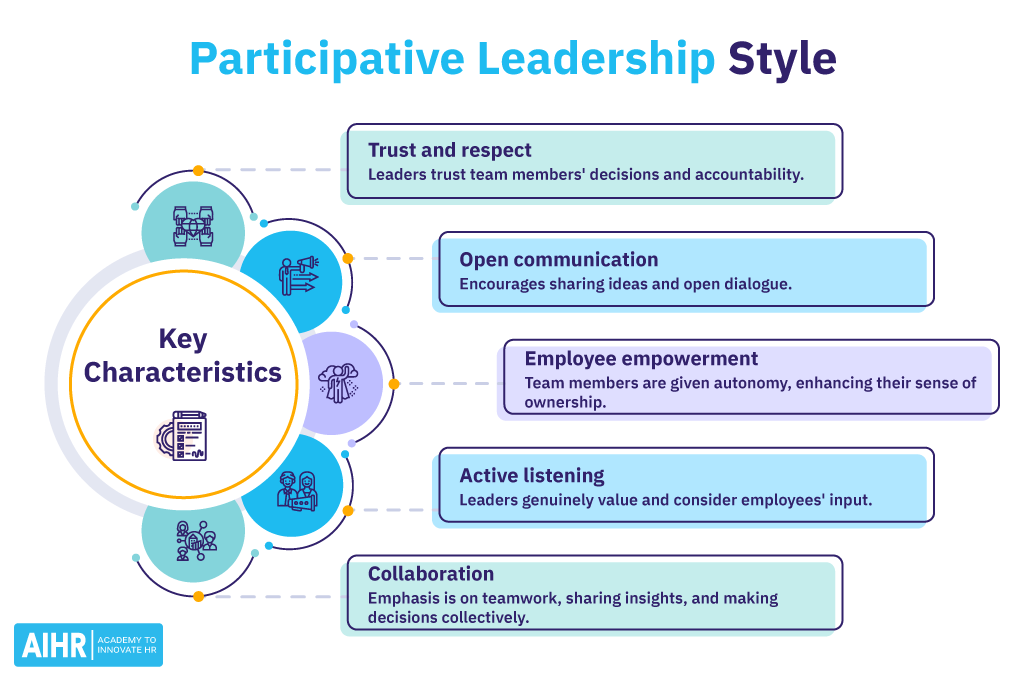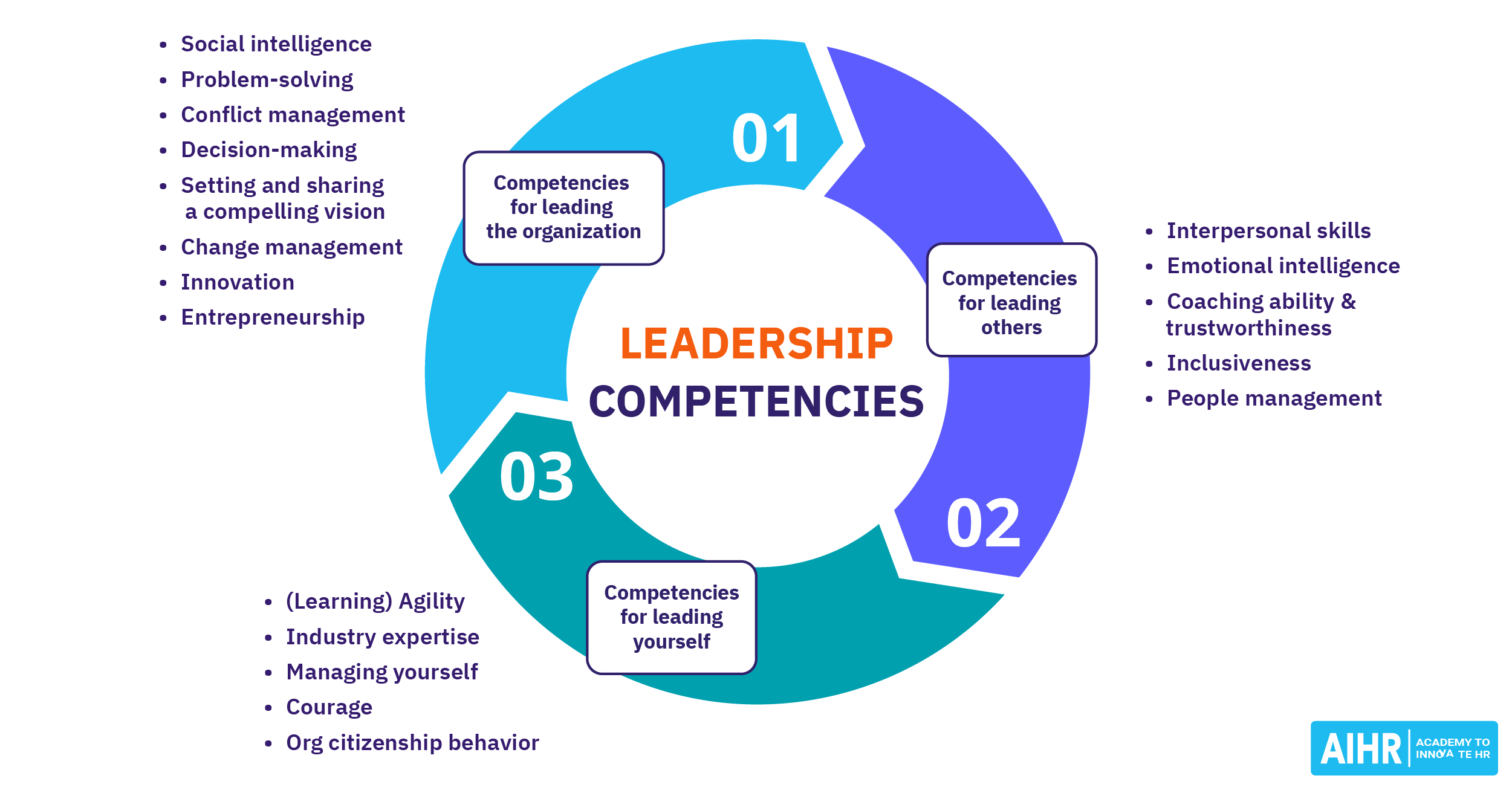Participative Leadership
What is participative leadership?
Participative leadership is a style of management that focuses on actively involving employees in decision-making processes. This can include freely contributing ideas, sharing their perspectives, and providing input on key decisions that affect the team and overall organization.
Unlike traditional, more hierarchical leadership styles, which often take a top-down approach to management, participative leadership promotes a democratic, collaborative work environment. Although participative leaders consider team members’ input, they ultimately make the final decision.
The participative leadership theory can be traced back to the 1930s and has evolved over time.
Participative leadership style characteristics
Since participative leadership actively encourages participation from employees in decision-making and problem-solving, it is often associated with these characteristics:
- Trust & respect: Leaders trust team members to make critical decisions and take accountability for their tasks.
- Open communication: Participative leaders encourage open and transparent communication, where employees can freely share their opinions and ideas.
- Employee empowerment: Employees are often given more control over their tasks, fostering autonomy and a sense of ownership.
- Active listening: Leaders show genuine interest in team members’ perspectives, actively listening to what they have to say.
- Collaboration: Teamwork, knowledge sharing, and collective decision-making are prioritized by participative leaders.

Participative vs. democratic vs autocratic vs transformational leadership
Here is an overview of the differences between democratic, autocratic, transformational, and participative leadership styles:
| Participative | Democratic | Autocratic | Transformational | |
| Decision-making | Shared with team members, leader makes the final decision | Collective decision-making with team input | Leaders make all the decisions | Sets a clear vision and goals, inspiring the team to make aligned decisions |
| Employee involvement | High, encouraged, and valued | High, encouraged, and final decision made by voting | Minimal, employees follow instructions | Moderate to high, emphasizes vision and enthusiasm |
| Approach to power | Shared with team members | Shared, with a focus on group equality | Centralized with the leader | Influence is used to motivate and transform followers |
| Suitability | Organizations where teamwork and employee satisfaction are prioritized | Environments that require consensus and collaboration | Situations requiring quick decisions and clear direction | Organizations seeking significant changes or facing challenges |
Participative leadership pros and cons
Pros
- Better problem-solving: With more minds contributing to discussions, problem-solving becomes more effective, utilizing the group’s collective knowledge.
- Increased motivation: When employees are involved in making key decisions and collaborative problem-solving, they feel more part of the organization. This level of involvement increases motivation and engagement in their work.
- Creative and innovative thinking: Encouraging open communication and collaboration can spark innovative ideas and creative solutions to problems.
- Stronger rapport & relationships: By actively promoting collaboration and teamwork, employees often develop a greater sense of trust and respect.
Cons
- Slower decision-making: Gathering input from all members can delay decision-making, which may be inefficient in time-sensitive situations.
- More suitable for smaller teams: Big teams can make participative leadership more challenging, as leaders have to consider a wide range of perspectives.
- Potential for conflict: Differing opinions can sometimes lead to disagreements among team members.
- Not suitable for high–pressure or urgent situations: In some scenarios, especially where quick, decisive action is needed, participative leadership might not be the best approach.
Participative leadership examples
Here are some leading examples of participative leaders:
1. Bill Gates, Founder of Microsoft: Gates is known for valuing the knowledge and skills of his team members, actively seeking their suggestions, and involving them in the decision-making process. This approach not only fosters innovation but also drives the company toward achieving its goals more efficiently and effectively.
2. Mary Barra, CEO of General Motors: By fostering shared responsibility at GM, Barra was influential in creating a more open and transparent work environment for employees. One of her key achievements is encouraging employees to report problems, especially manufacturing. Barra also seeks opinions from all levels of employees through town halls and company-wide meetings. She uses this input to shape GM’s strategy.
3. Yvon Chouinard, Founder of Patagonia: Chouinard led Patagonia with a purpose-driven, compassionate leadership style that prioritized both social responsibility and employee wellbeing. He encouraged employee participation in key decision-making and established Patagonia as a Teal organization, where self-management teams allow employees to have greater autonomy and ownership over their work.
HR tip
To implement participative leadership, promote an environment where open communication and collaboration are the norm. Encourage team members to share ideas and opinions and ensure they feel heard and respected. This inclusivity boosts morale and leads to more innovative solutions.
Situations ideal for the participative leadership style
Participative leadership is typically most effective in environments where collaboration, innovation, and employee engagement are critical for success. Here are specific situations where participative leadership can be particularly effective:
- Projects requiring diverse expertise: Complex projects that need specific knowledge or skills from various team members.
- Highly skilled workforces: In sectors where employees are highly educated or skilled, such as healthcare, engineering, or academia, participative leadership leverages the expertise within the team to make better decisions.
- Organizational development initiatives: Efforts to improve company culture, processes, or structures benefit from participative leadership by ensuring that those affected by the changes have a say in the process.
FAQ
An example of participative leadership in a product development team could involve a leader holding brainstorming sessions to gather ideas for new product features and facilitating discussions to weigh different options before reaching a final consensus.
Some notable weaknesses of the participative leadership style include:
o Slower decision-making
o Differing opinions lead to conflict
o Not suitable for urgent, immediate situations
o Requires highly skilled leadership skills to effectively manage and facilitate diverse perspectives.
Both leadership styles prioritize shared decision-making. However, democratic leadership gives employees a higher degree of control, allowing them to vote on final decisions. Even though they actively involve team members and consider their input, participative leaders often make the final decisions.







